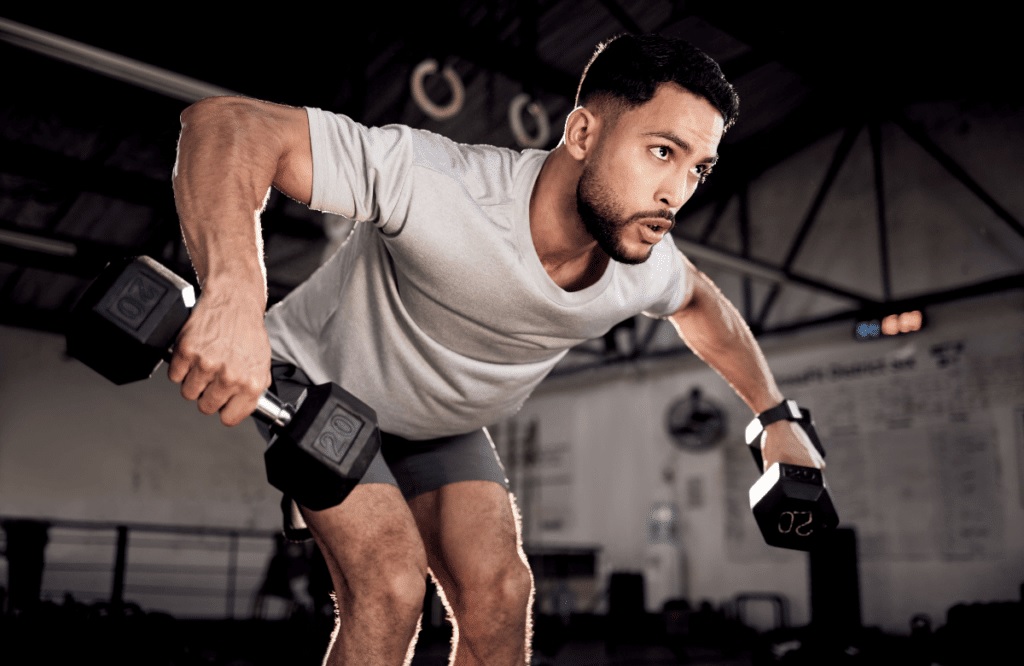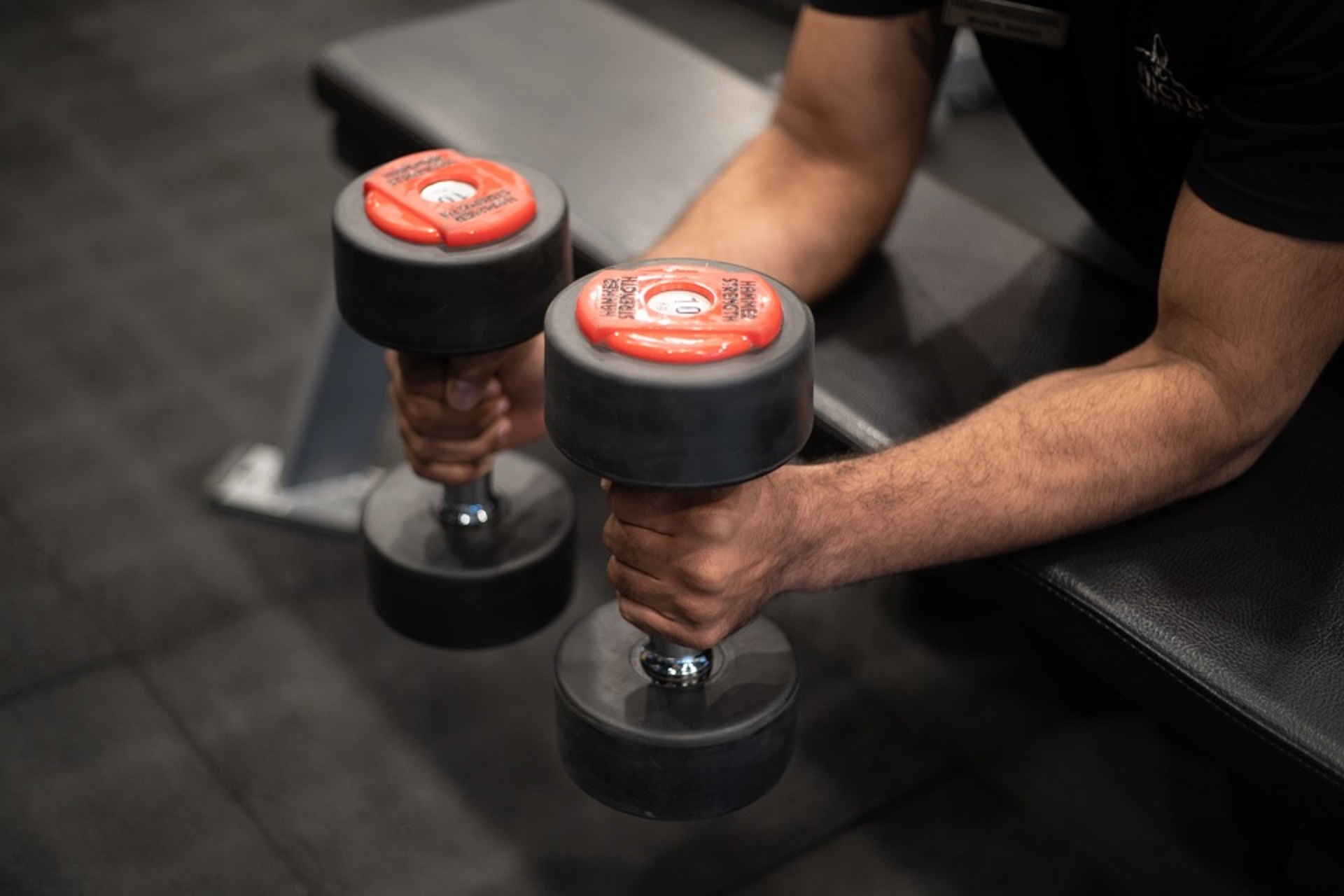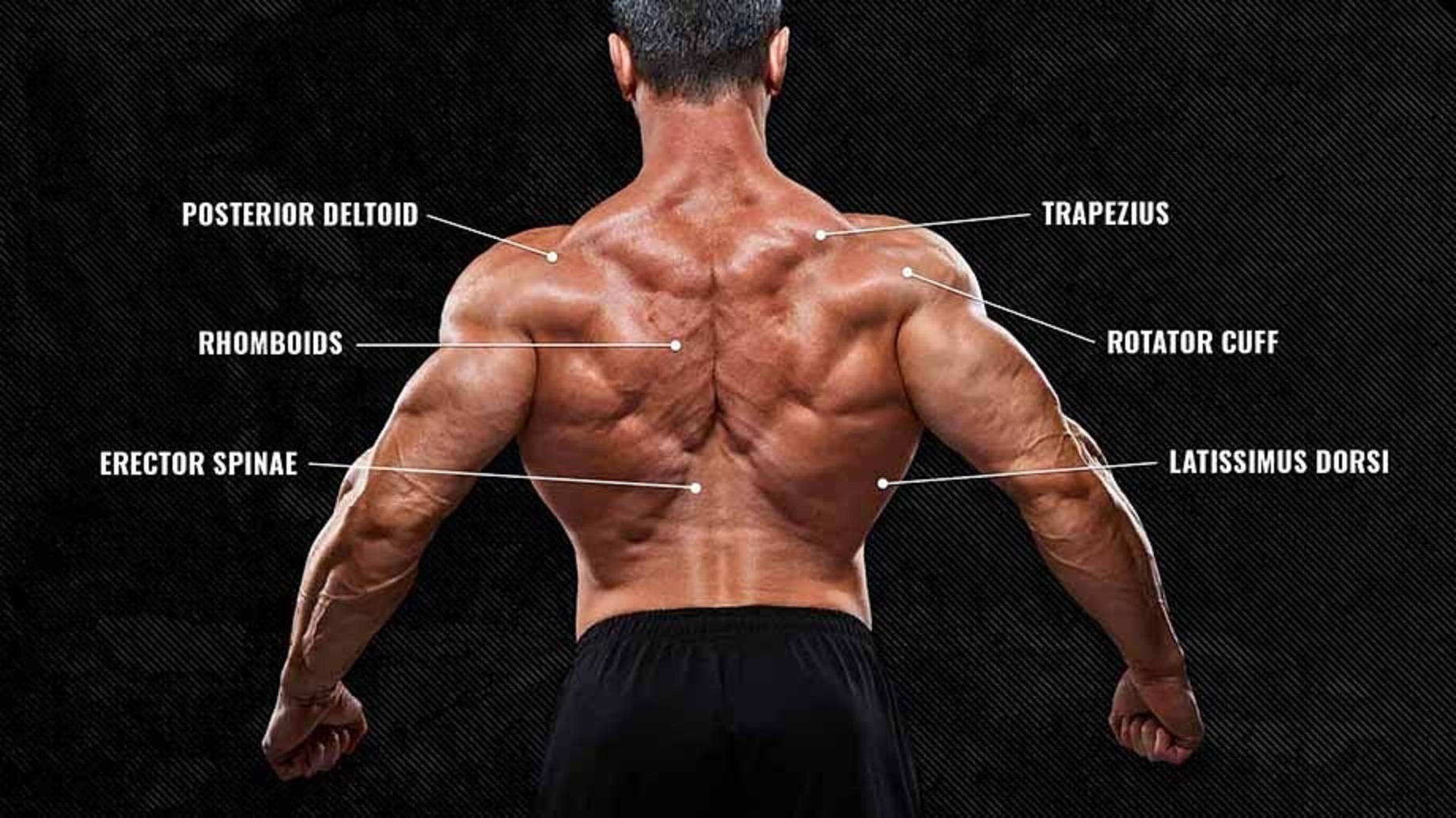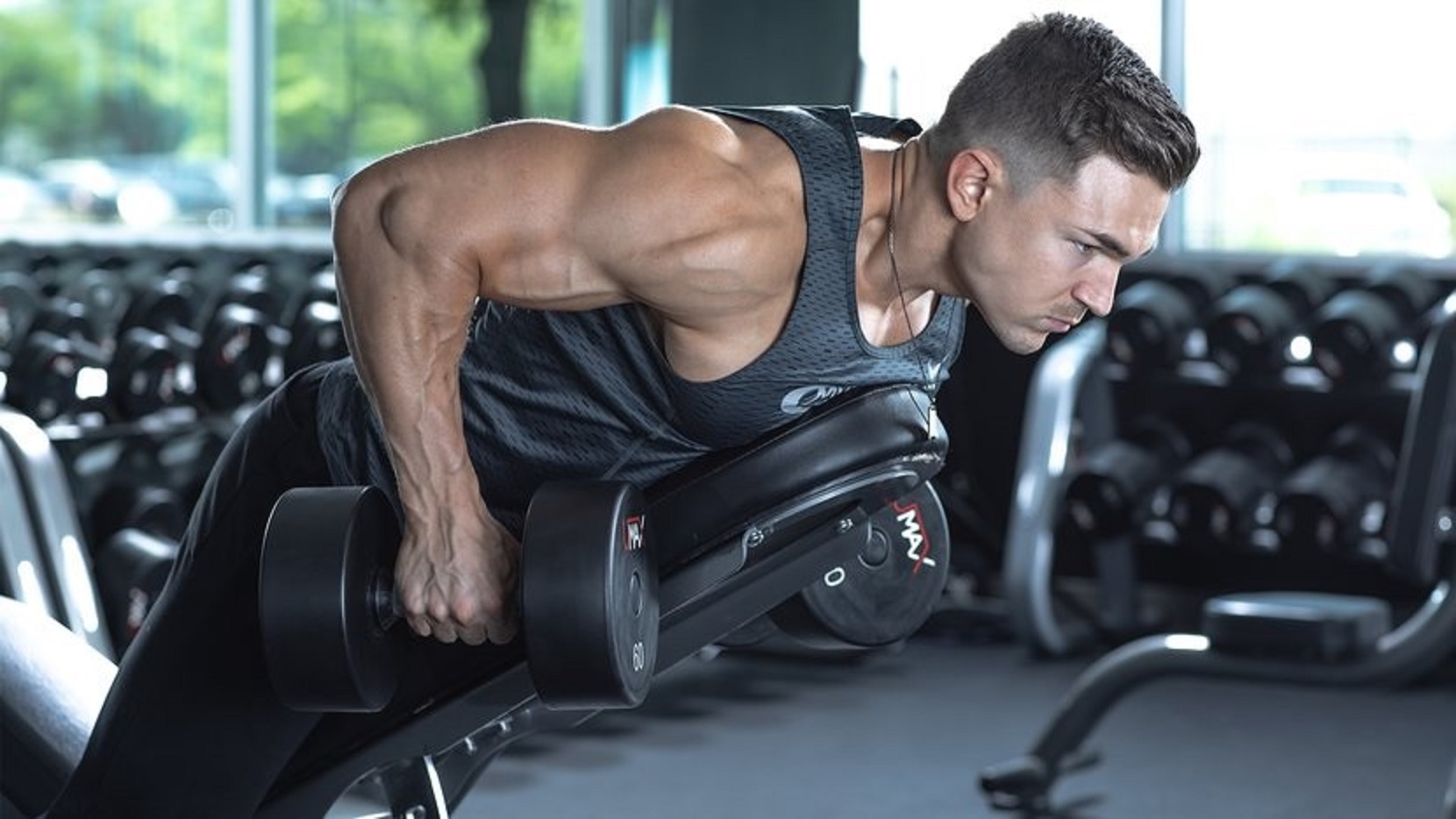Dumbbell rows are an important exercise in strength training that can build the muscles in your back. By pulling a dumbbell towards your hip with proper form, you involve muscles like the lats, rhomboids, and traps. These exercises aren’t just about looking good – they can also improve your functional strength for everyday tasks and sports.
Dumbbell rows are often overlooked, but they shouldn’t be! Some people avoid doing them because they worry about hurting their lower back, focusing too much on their shoulders, or feeling uncomfortable on a bench.
Having a strong back is crucial for overall health and performance. Whether you’re trying to build a strong foundation, fix muscle imbalances, or increase strength, adding dumbbell rows to your routine can make a big difference.
This breakdown is split into different sections, each tackling different problems and solutions so you can make the most of this exercise for building a strong back.
Understanding Optimal Angles
- Better Muscle Activation: When you hit the right angles, like the lats, rhomboids, and traps, you’re setting up for better muscle growth.
- Lower Injury Risk: Good form with the right angles lowers the risk of hurting your joints or lower back during dumbbell rows.
- More Movement: With optimal angles, you can move more freely, which can help with flexibility and mobility.
- Targeted Muscles: Adjusting the angle lets you zero in on specific areas of your back, making your workout more effective.

Here’s What You Can Do:
- Keeping your back parallel to the floor can help activate muscles like the spinal erectors and lower lat muscles.
- Feeling a strong sensation in the middle back? This is normal, especially at extreme angles, and shows your muscles are working hard.
- Try upright angles too. This position engages the trapezius muscles, especially in the mid and lower traps, giving you a more well-rounded back workout.
- Pay attention to your elbow angle. Raising your elbows during the row targets the upper back and rear deltoids more, adding complexity to the exercise and helping you achieve specific muscle development goals.
Grip Variations
Here are some grip tips to think about when you’re doing dumbbell rows:
- Go Neutral: Particularly for those with shoulder issues, try using a neutral grip where your palms face each other. It can help ease the strain on your shoulders and keep your form on point.
- Twist It Up: To really amp up the row and hit those muscles from different angles, try twisting your wrists slightly upward. It might seem like a small change, but it can make a big difference in how your muscles fire up.
- Mix It: Don’t stick to just one grip style. Experiment with different grips. Try palms facing down or palms facing up to hit different parts of your back and arms.
- Feel the Connection: Pay attention to how your grip feels during the exercise, find what feels right for you and go with it.

Addressing Erector Spinal Muscles
If you’re feeling some discomfort in your back muscles during dumbbell rows, it’s important to deal with it to stay safe and avoid any issues.
First off, take a look at your form. Make sure you’re keeping your back straight and not arching or rounding it too much. This can take some pressure off those back muscles and stop them from getting strained.
You might also want to think about using lighter weights for your rows. Less weight means less strain on your muscles, which can help ease that discomfort.
Remember, always pay attention to what your body’s telling you. Keeping good form and technique is key to keeping yourself injury-free and making progress in the long run.

Some Tips:
When you’re struggling with intense pain in your back muscles during rows, try adjusting your bench position. Keep your back flat and your chest on the bench to ease the discomfort without making it worse.
To really tackle the problem, focus on exercises that strengthen those back muscles. Add them into your routine towards the end of your workout to give them some extra attention and push them to their limits safely.
You can also try using machines like the hyperextension or glute ham raise to really target those back muscles. Mixing these into your routine helps make sure you’re hitting all the right spots and working towards a stronger, pain-free back.

Adjusting The Range of Motions
When you’re doing dumbbell rows and feel like your shoulders are doing too much of the work, you can tweak your range of motion to fix that. Here’s what you can do:
- Shorten Your Range: Instead of pulling the dumbbell all the way up, just focus on the part of the movement that really works your back muscles. This helps stop your shoulders from taking over.
- Focus on Your Back: By honing in on this part of the movement, you’ll get a better connection with your back muscles. It’s all about making sure they’re doing the heavy lifting, not your shoulders.
- Take It Easy: Start with this adjusted range of motion and when you get better control, gradually work your way up to the full movement. This helps your back muscles become stronger and more involved in the exercise.
- Stay Balanced: Adjusting your range of motion like this helps make sure your back and shoulder muscles are balanced. It’s all about doing the exercise right, not just doing more of it.
Focus On Your Form
When it comes to getting the most out of your dumbbell rows, nailing your form and focus is key to really hitting those back muscles. Here’s what you need to know:
- Keep it steady: Make sure your form is on point. Keep that back straight, shoulders back, and core tight throughout the whole movement. Avoid swinging those weights around with momentum, as it can make the exercise less effective.
- Mind your elbows: Keep those elbows stable and in position to prevent your biceps from taking over. This helps ensure that your back muscles are doing the heavy lifting.
- Choose the right weight: Don’t go too heavy. Pick a weight that lets you keep good form and control from start to finish. Going too heavy can mess with your form and up the risk of injury.
- Engage those lats: Instead of letting your biceps do all the work, focus on driving the movement with your lat muscles. Think about pulling your elbows back and squeezing those shoulder blades together.
Stick with these tips in your rows, and you’ll be giving your back muscles the workout they deserve. By keeping those biceps in check, you’ll set yourself up for some serious gains over time.
Common FAQs:
Neutral or pronated grip: Which one’s better?
Both work, but a neutral grip (palms facing each other) might be nicer on your shoulders. Give each a shot to see which feels better and keeps your form on point.
How can I stop my lower back from hurting during rows?
Keep your back straight as a board while you row. Don’t arch it too much or round it out, and lighten up the weight if you need to keep things in check.
Am I lifting too heavy in dumbbell rows?
If you’re swinging the weights or struggling to keep it smooth, you might be pushing too hard. Ease up on the weight so you can focus on form.
Do dumbbell rows help pack on muscle?
Definitely! They hit a bunch of muscles in your back, so when you do them right with enough resistance, they can help bulk you up.
Which is best: One-arm or two-arm rows?
They both get the job done, but one-arm rows can help even out any muscle imbalances. Give them both a whirl and see which one vibes with you best.









